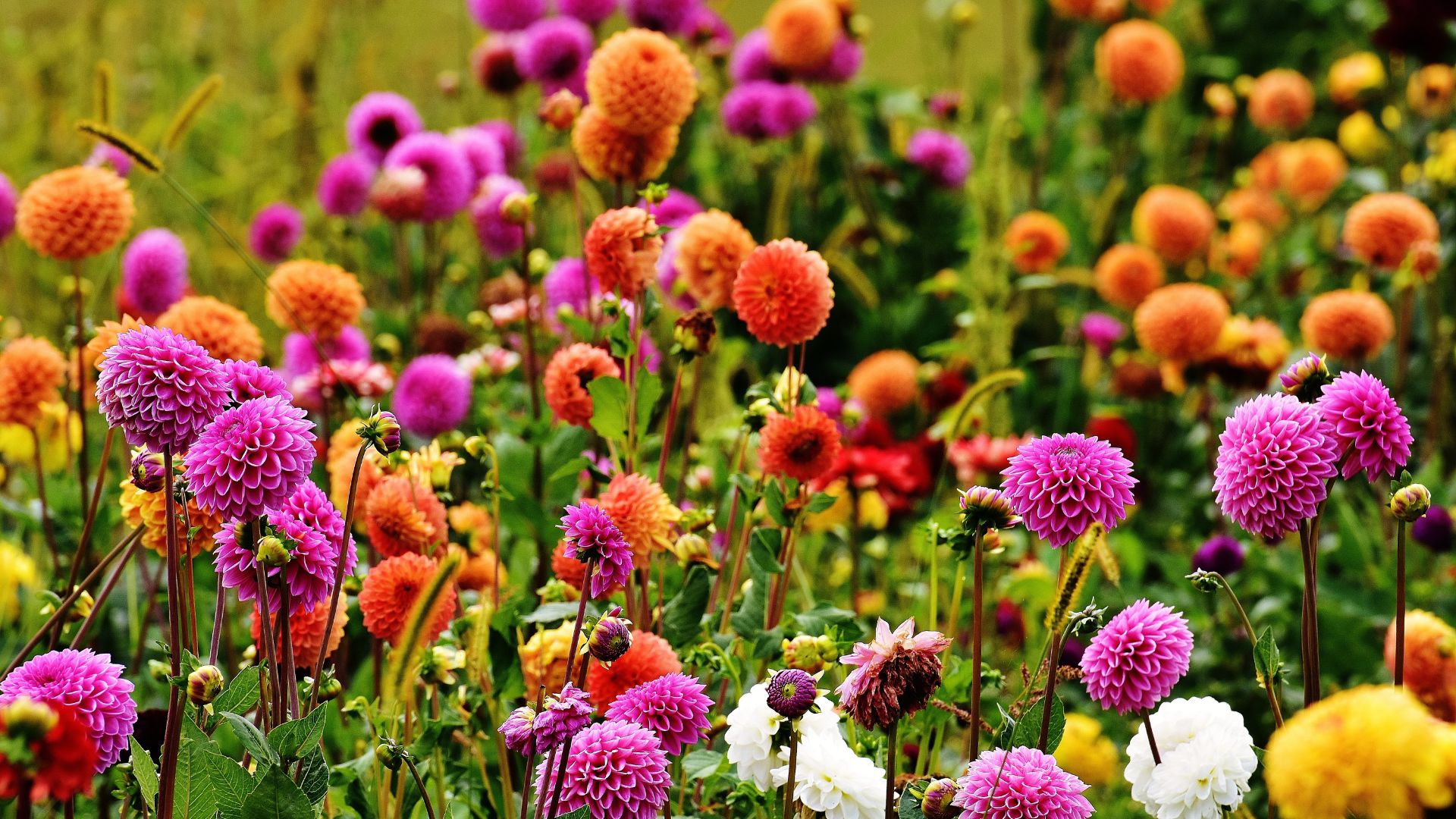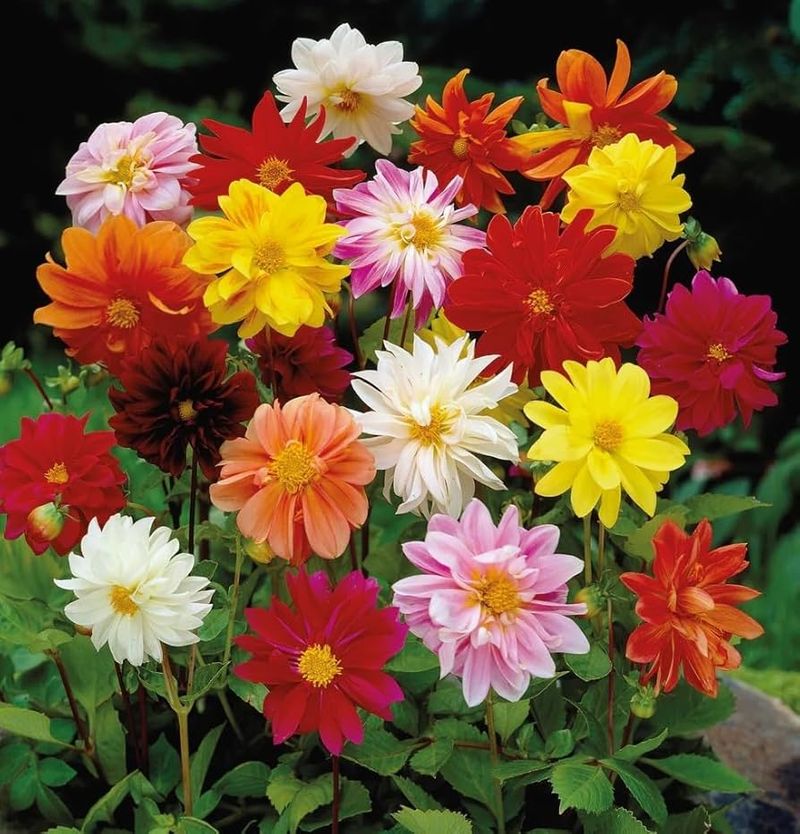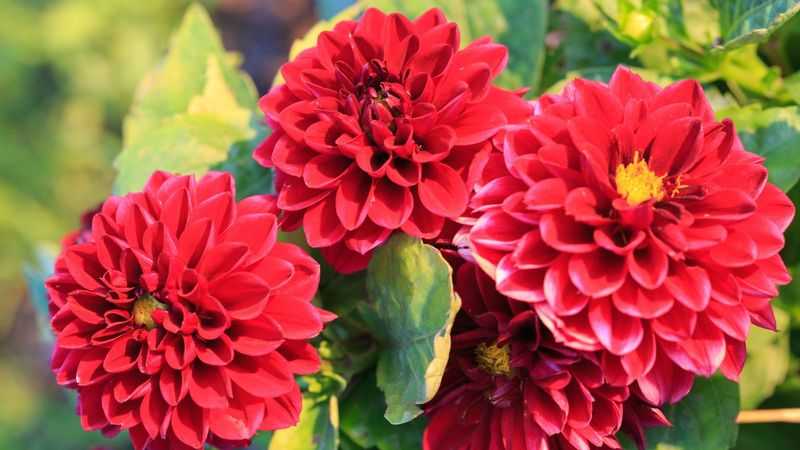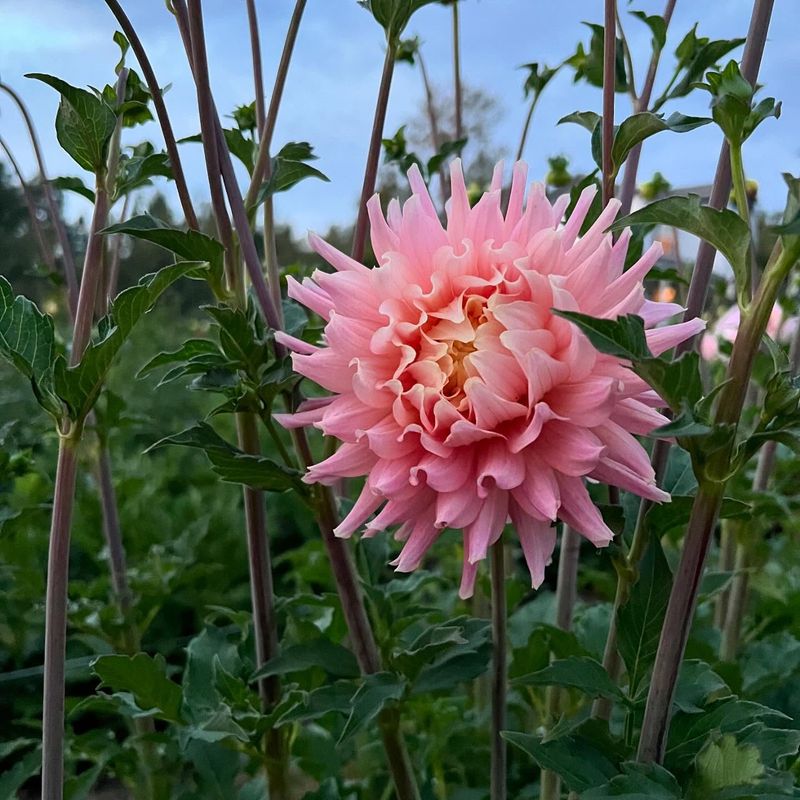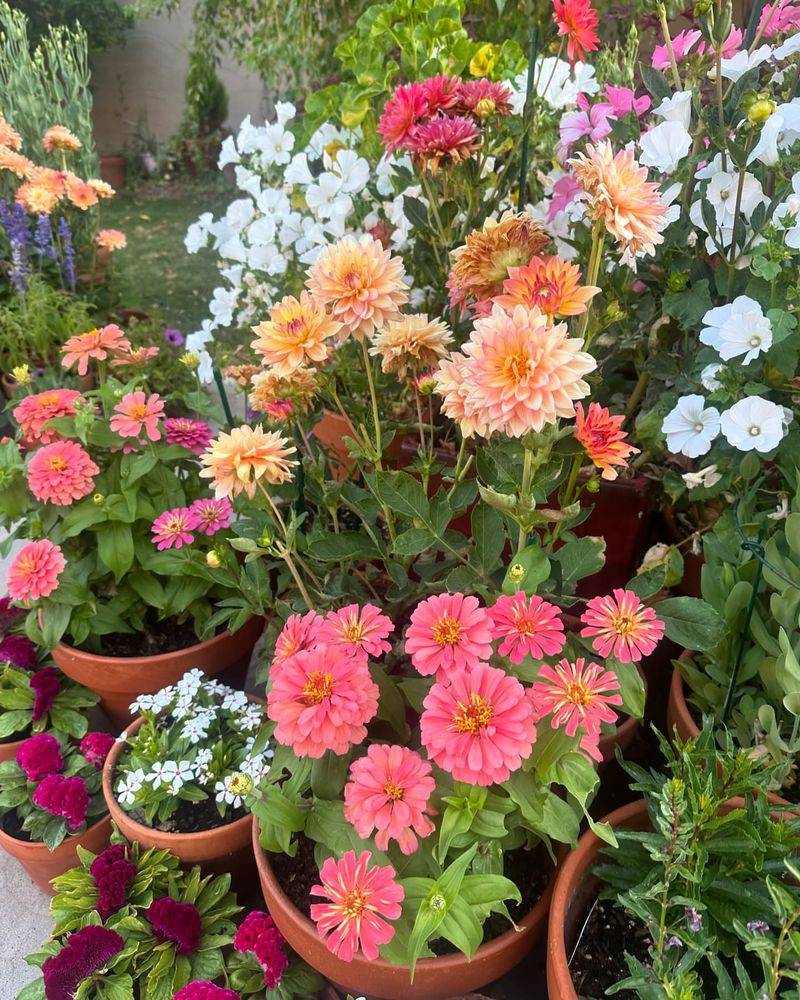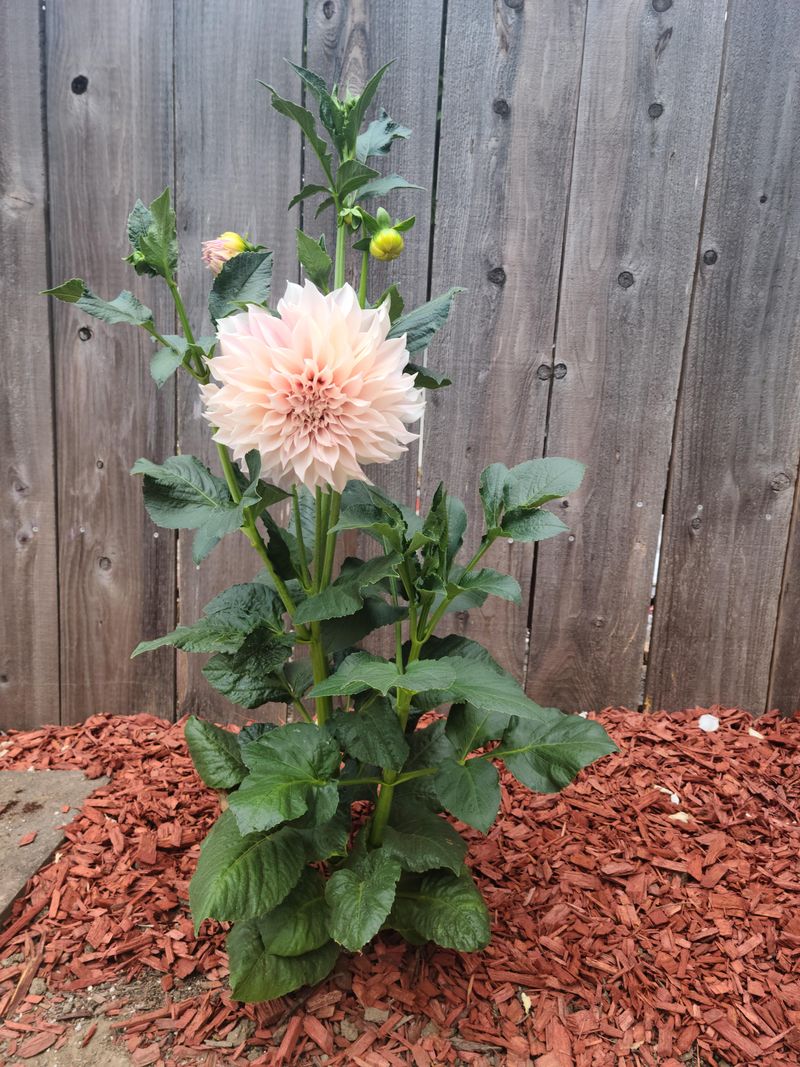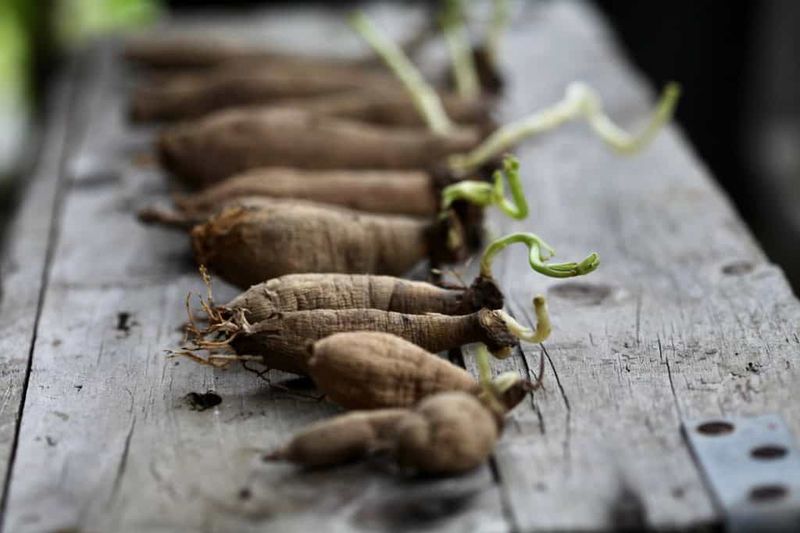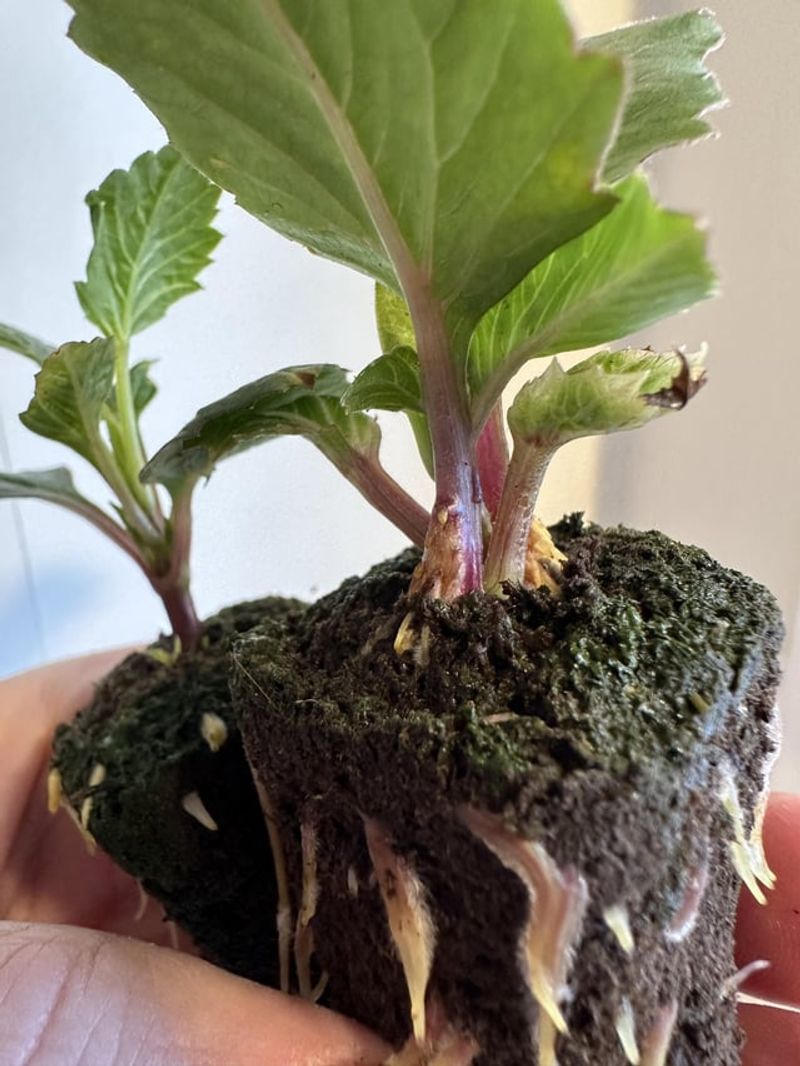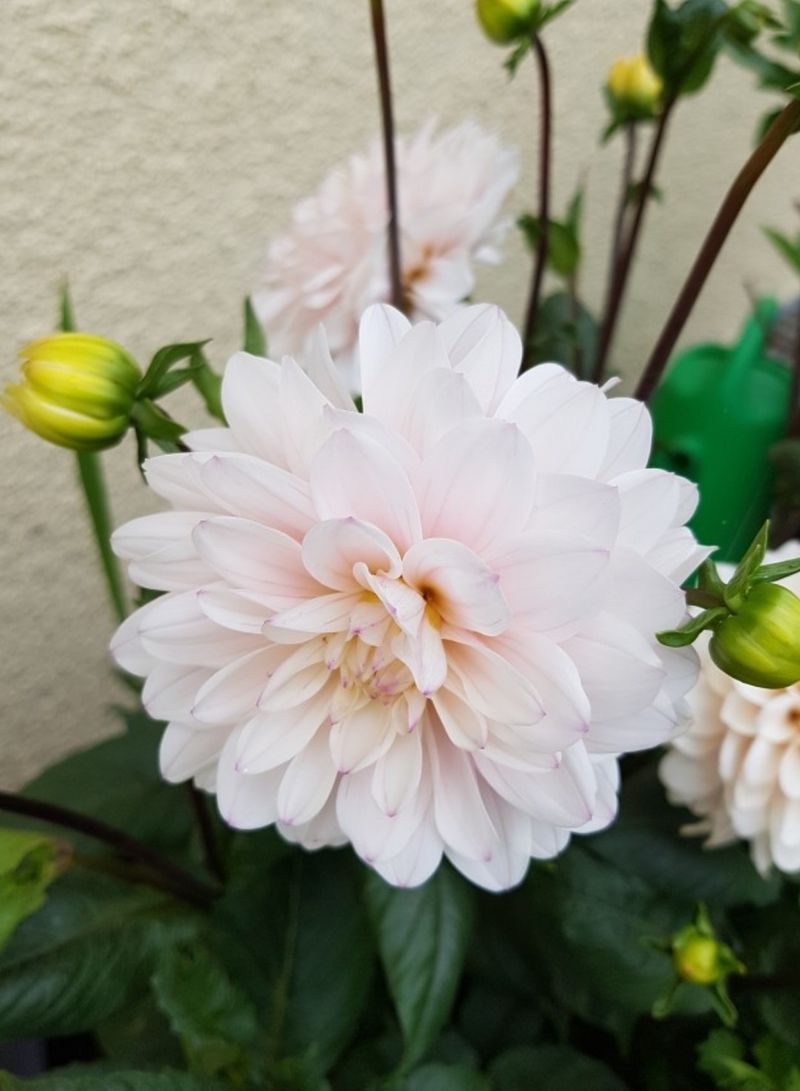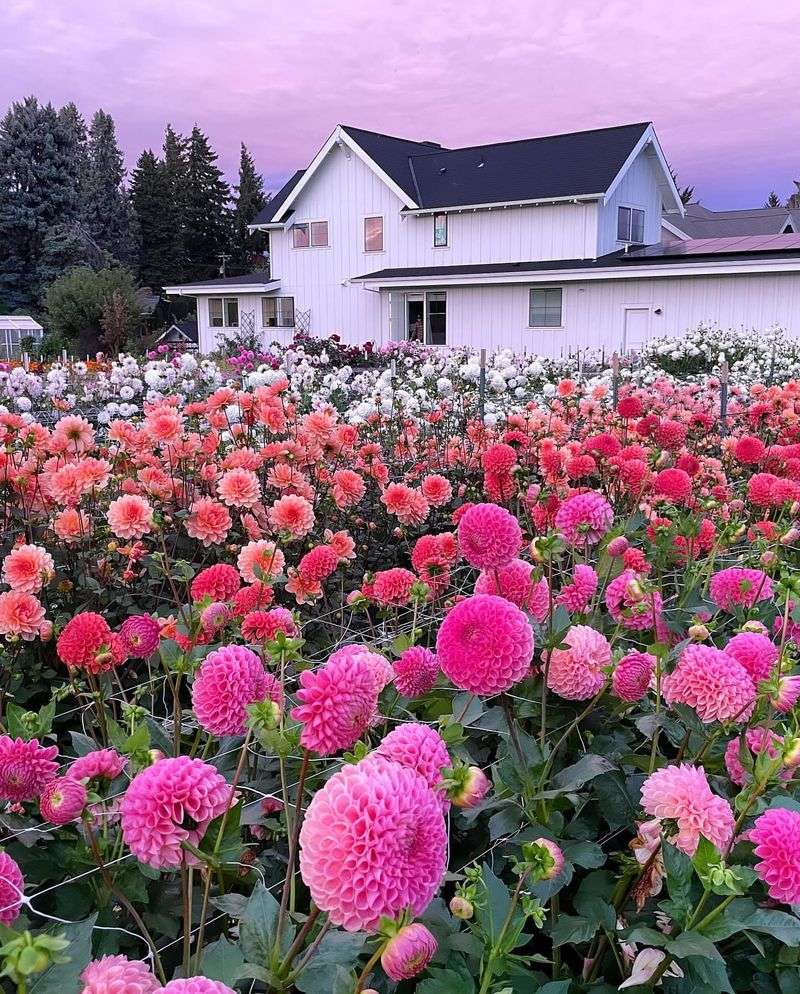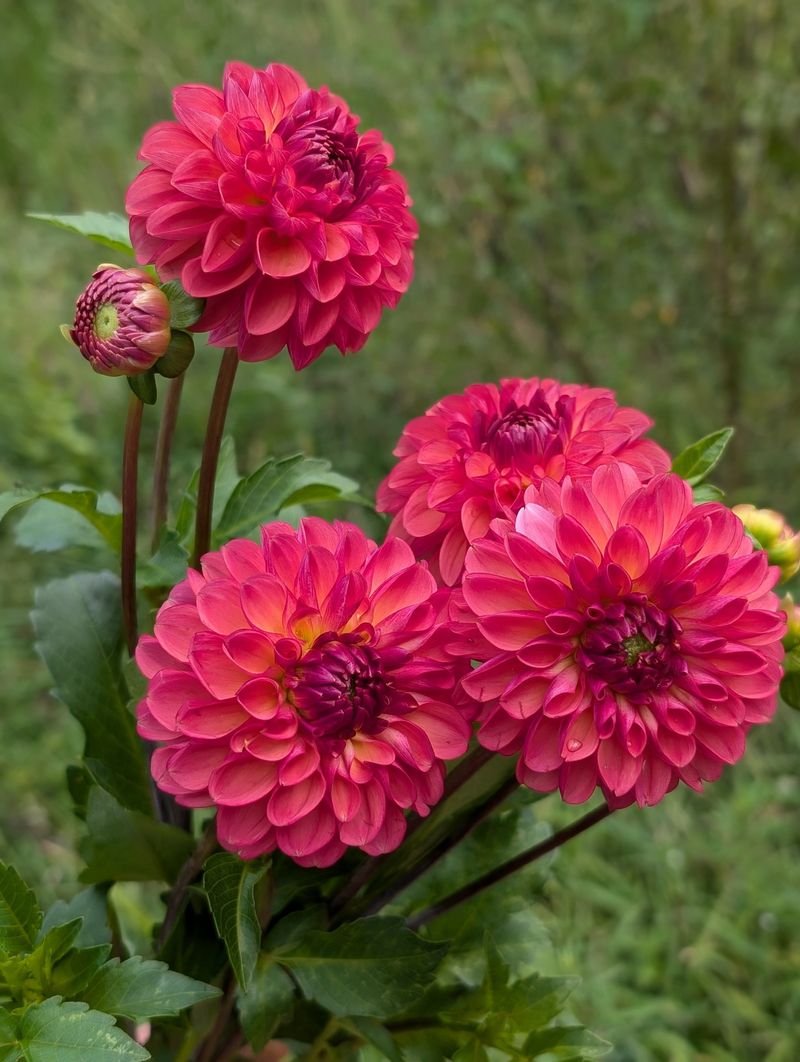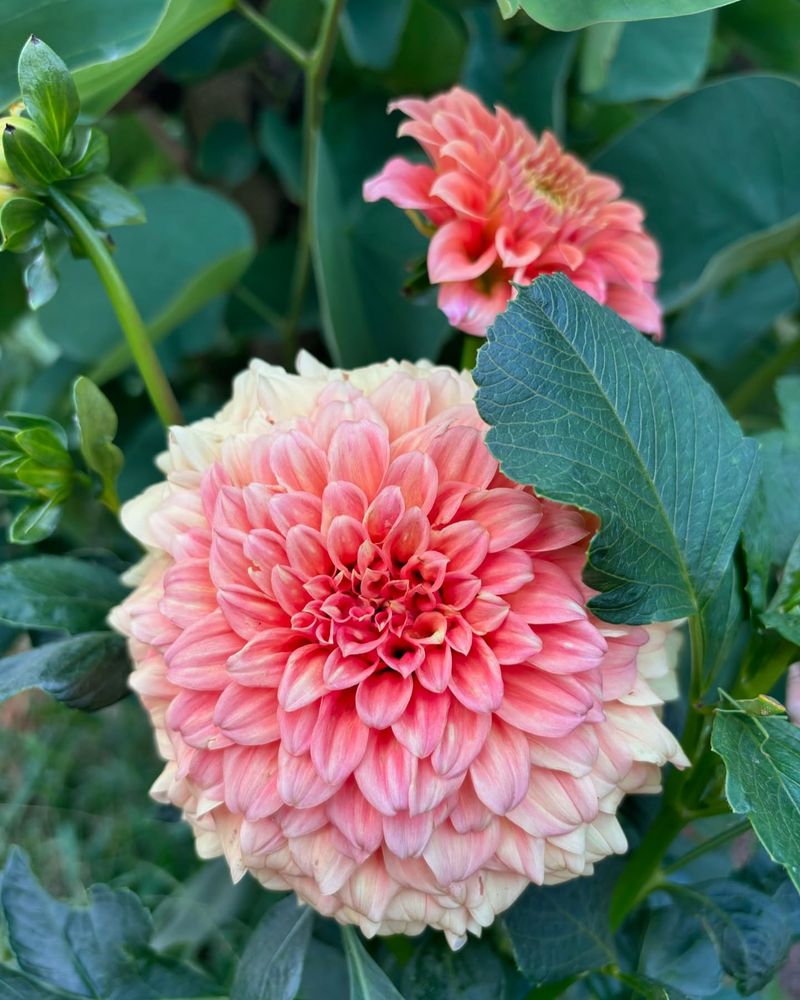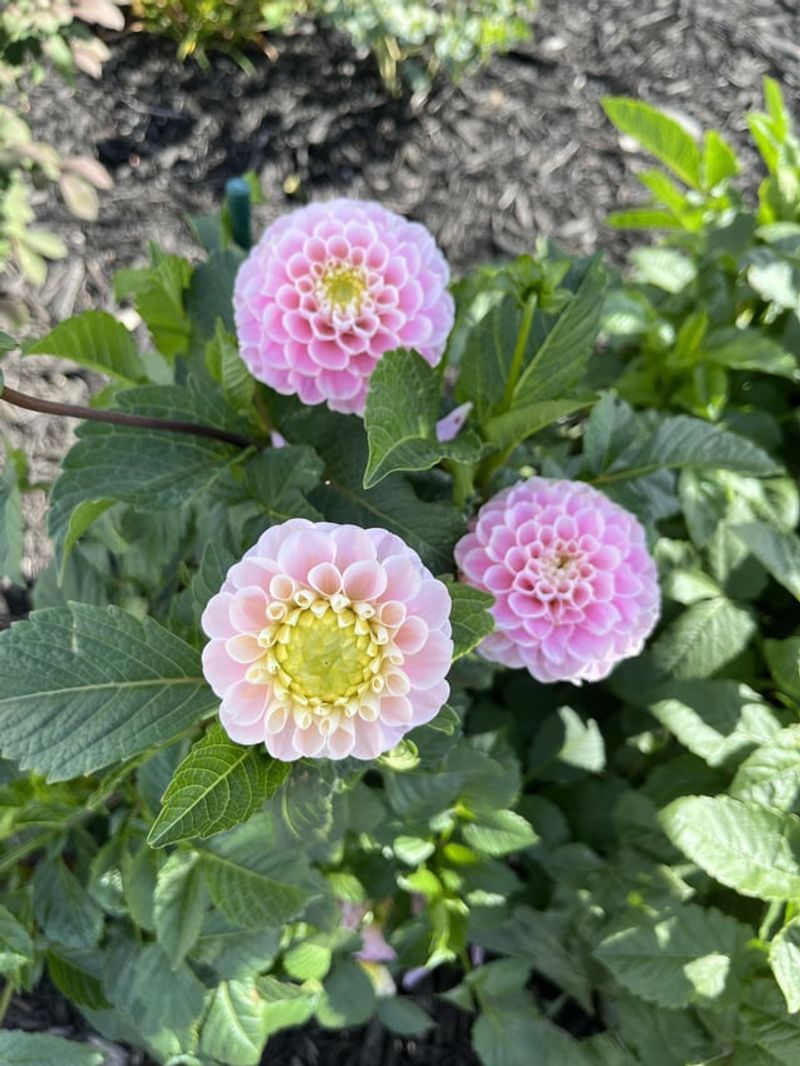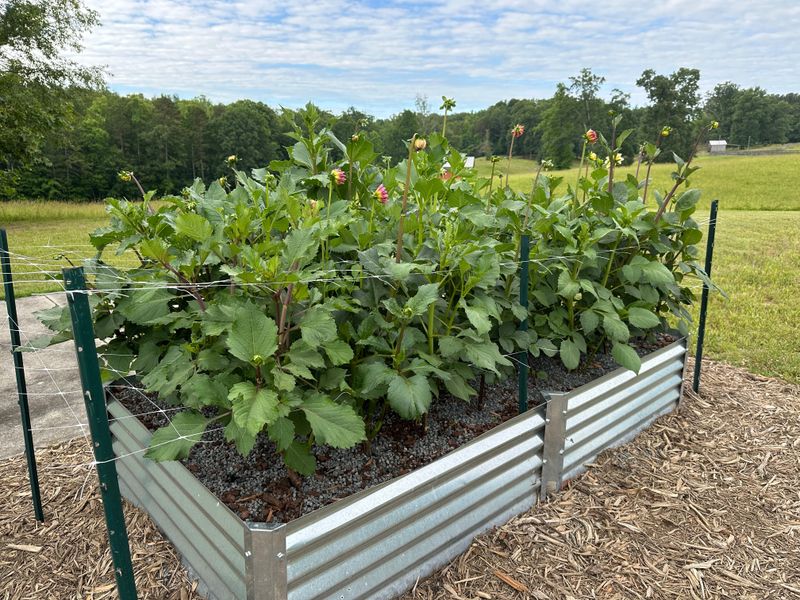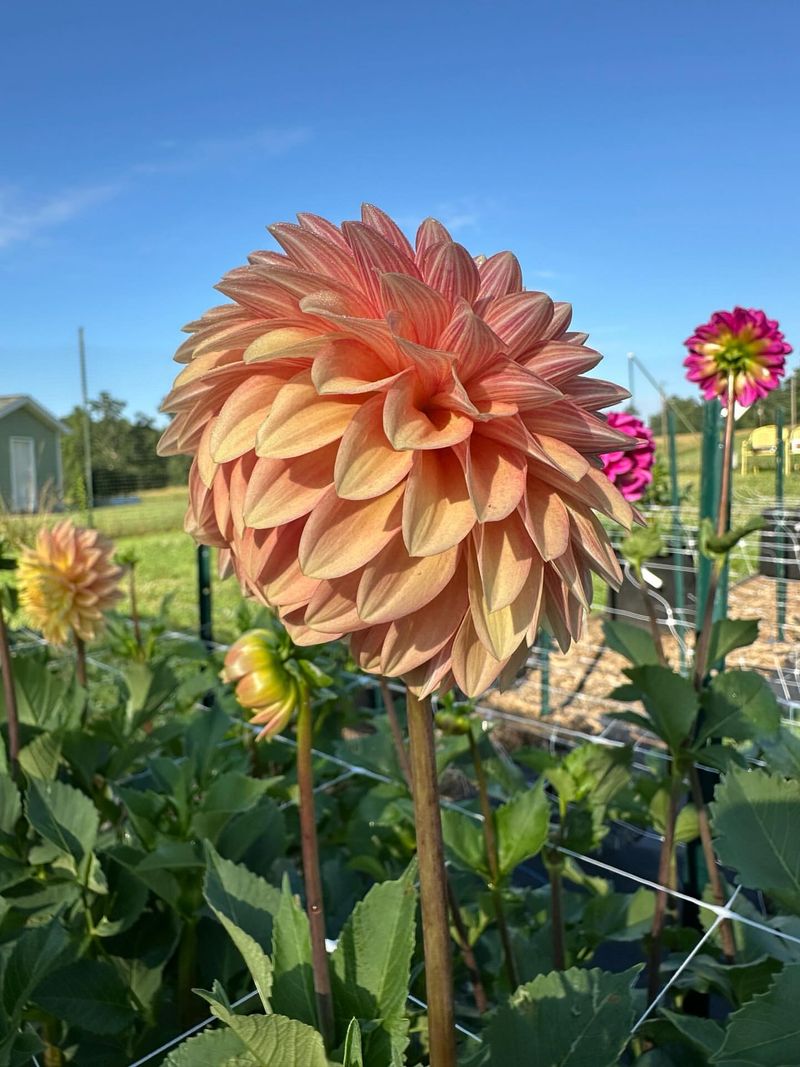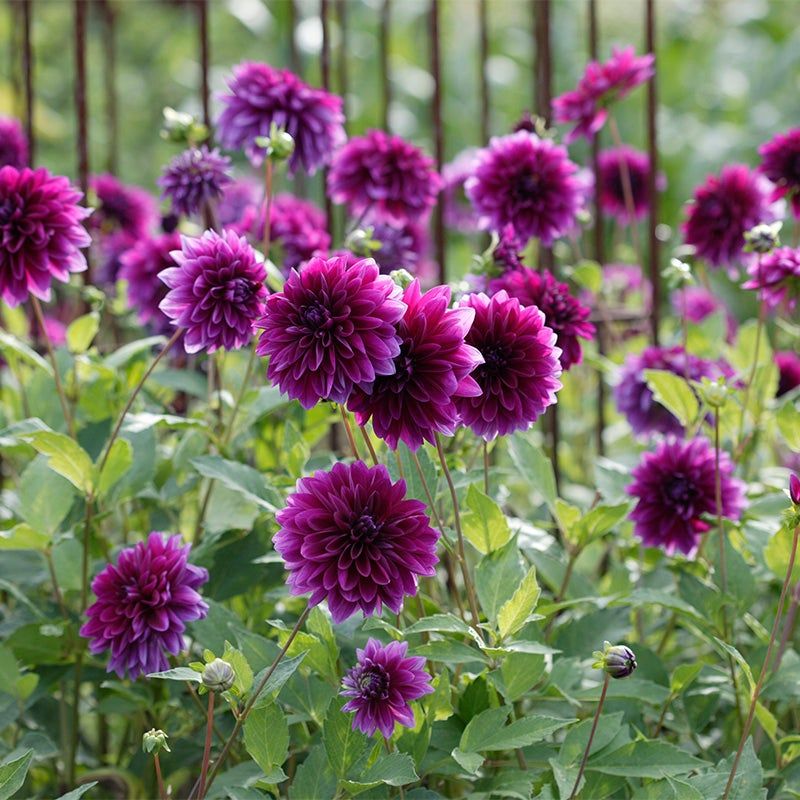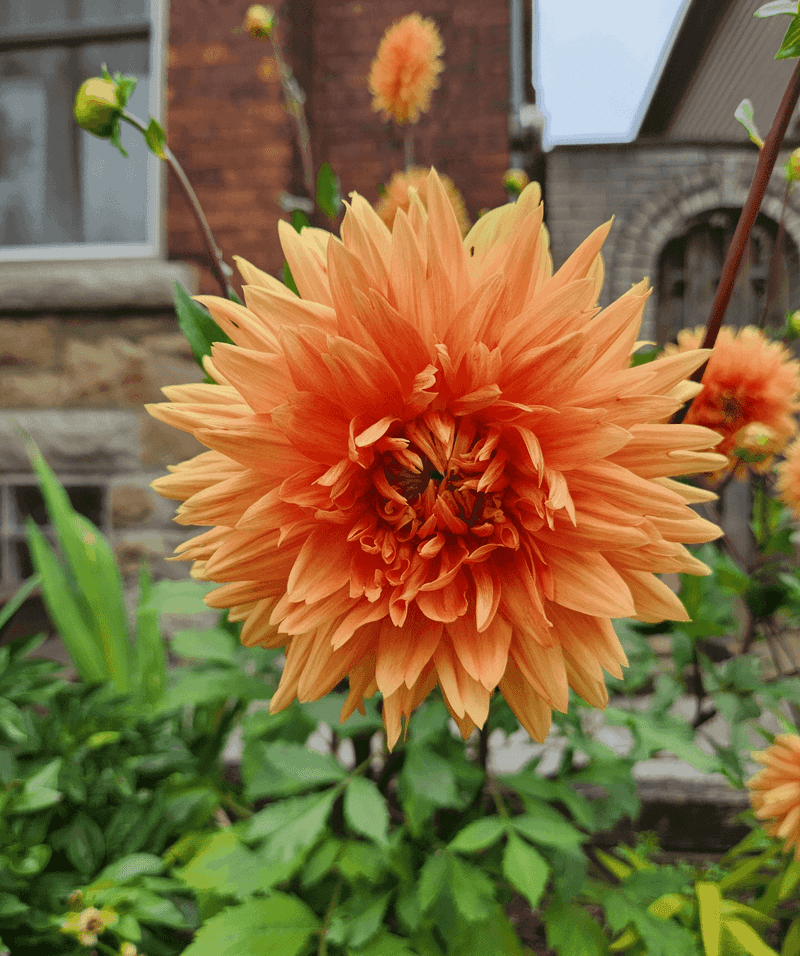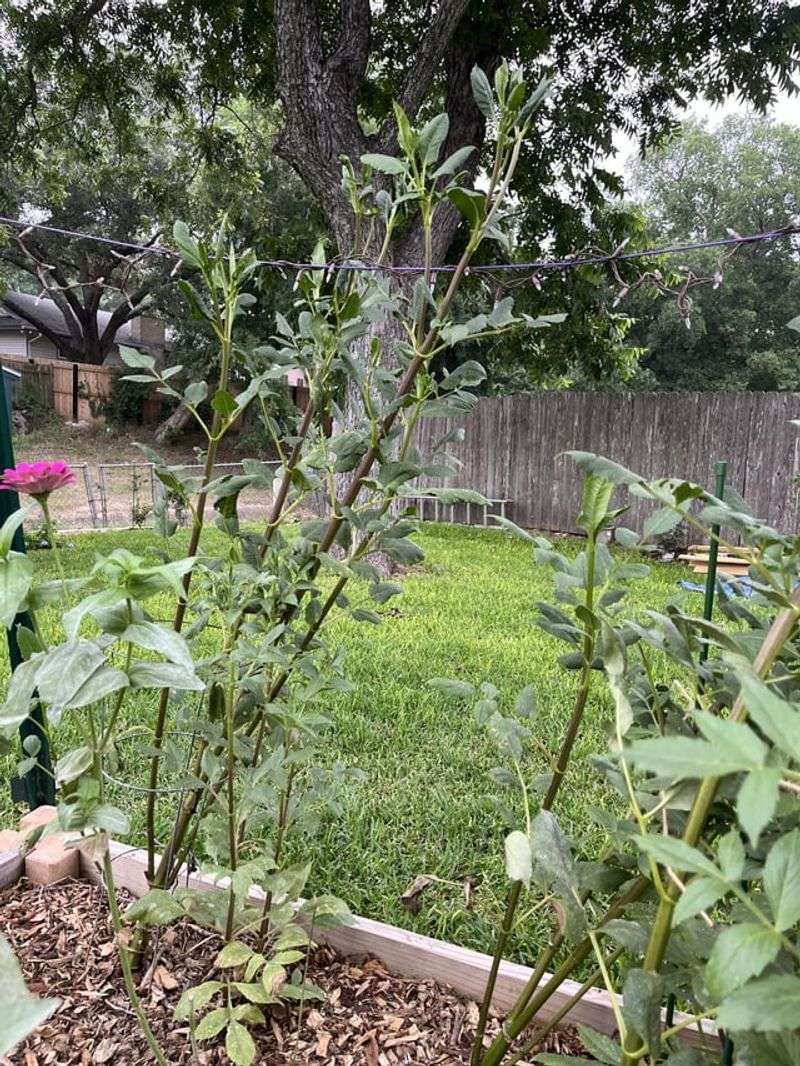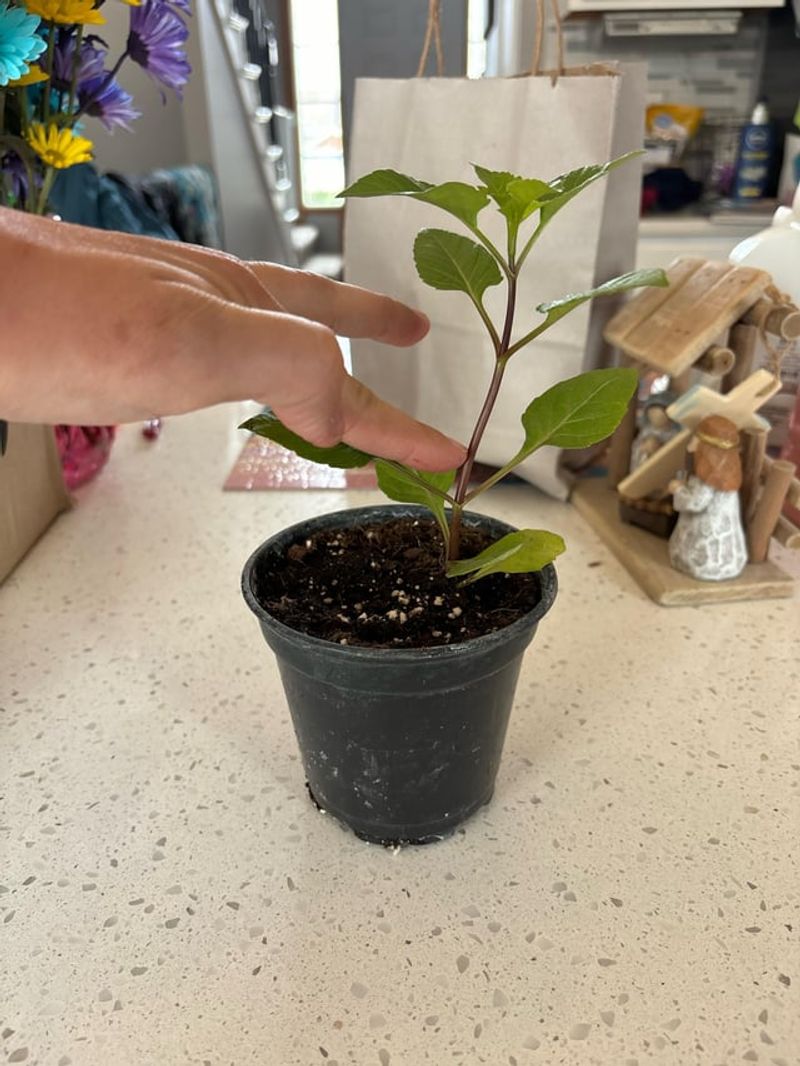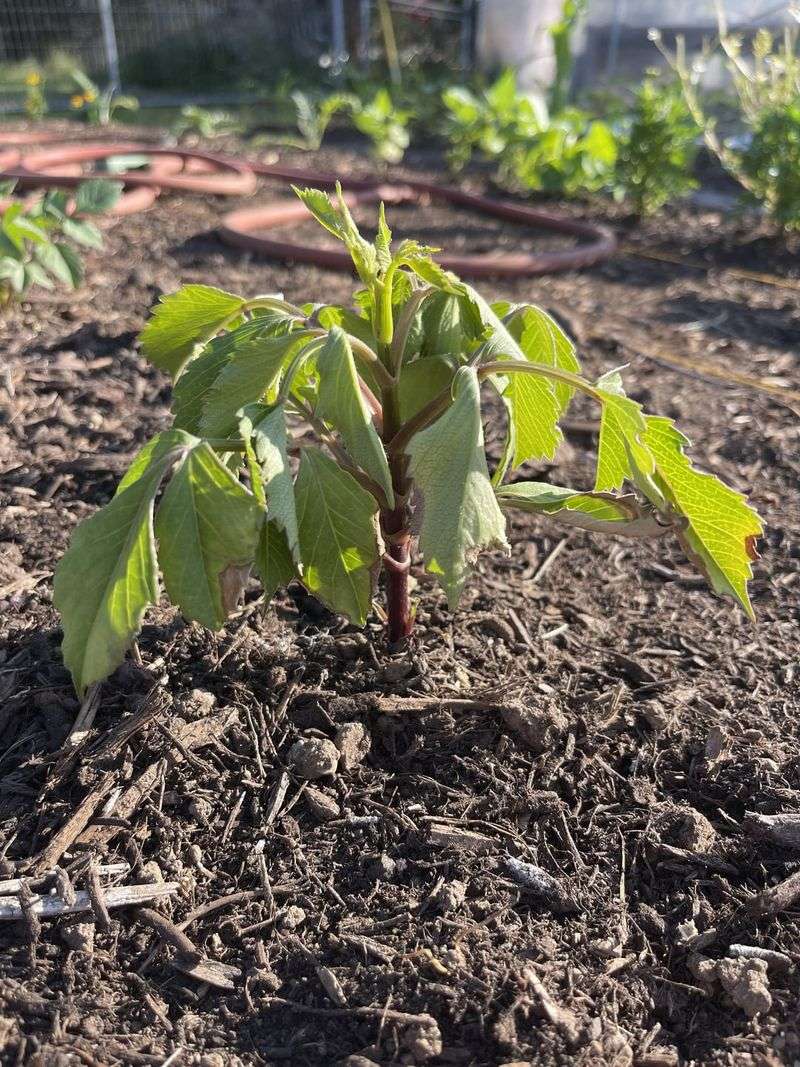Dahlias might start small, but give them time and they’ll stretch, sprawl, and surprise you with their size—kind of like garden overachievers. Their bold blooms are irresistible, but managing their height and shape doesn’t have to be a losing battle.
The trick? Strategic pinching and pruning early in the season. Snipping the central stem once they hit about a foot tall encourages side growth and fuller, bushier plants that stay more compact.
It also leads to more blooms and less chaos. Choose smaller varieties for tight spaces, and give them sturdy supports to keep things tidy. With the right care, your dahlias can stay in bounds while still showing off like stars—no garden drama required.
1. Choose Naturally Compact Varieties
Start with genetics on your side by selecting dahlia varieties bred to stay smaller. Look for labels like ‘dwarf,’ ‘low-growing,’ or ‘border’ dahlias when buying tubers.
I’ve had great success with Gallery and Melody series dahlias that rarely exceed 18 inches tall. The flowers remain full-sized despite the smaller plant structure.
These compact varieties give you the same bloom power as their taller cousins but without the need for extensive management throughout the season.
2. Pinch Early And Often
When your dahlia reaches about 12 inches tall, pinch out the growing tip by removing the top set of leaves. This encourages the plant to branch out sideways rather than upward.
Last year, I pinched my ‘Cafe au Lait’ dahlias twice in early summer and ended up with plants half their usual height but covered in blooms.
The pinched plants develop a bushier habit with stronger stems that are less likely to flop over, creating a sturdier plant overall.
3. Limit Fertilizer Strength
Feed dahlias with lower nitrogen fertilizers to prevent excessive leafy growth. Look for formulations with higher phosphorus and potassium numbers compared to nitrogen (like 5-10-10).
I switched from all-purpose fertilizer to a bloom-boosting formula and immediately noticed my plants stayed more compact while flowering abundantly.
Apply fertilizer at half the recommended strength but maintain regular frequency to provide steady nutrition without promoting unwanted vertical growth.
4. Practice Strategic Disbudding
Remove the smaller side buds that form alongside the main bud on each stem. This concentrates the plant’s energy into fewer, but more spectacular blooms rather than overall growth.
I leave the center bud on each stem and pinch off the two side buds when they’re pea-sized. My plants stay shorter because they’re not trying to support dozens of blooms.
This technique works especially well for dinner-plate varieties that naturally want to put energy into massive blooms.
5. Grow In Containers
Planting dahlias in pots naturally restricts their root growth, resulting in smaller overall plants. Choose containers at least 12 inches deep but not oversized.
My patio dahlias in 14-inch pots grow to about two-thirds the size of their in-ground siblings. The confined root space keeps them naturally compact.
Container growing has the added benefit of allowing you to move plants around to optimize sun exposure without encouraging stretching.
6. Provide Full Sun Exposure
Place dahlias where they receive at least 6-8 hours of direct sunlight daily. Plants in partial shade tend to stretch toward light sources, becoming leggy and tall.
In my garden’s sunny corner, dahlias grow bushier and more compact compared to those along my fence line where light is filtered.
Consistent sun exposure also improves stem strength, reducing the need for extensive staking that makes plants appear larger than they actually are.
7. Plant Tubers Later In Spring
Delay planting dahlia tubers until soil temperatures are consistently warm. This shortens the overall growing season, naturally limiting their ultimate size.
I’ve found planting in late May instead of early April results in plants about 25% shorter by season’s end. The plants still have plenty of time to produce flowers before frost.
This method works particularly well in northern gardens where late spring planting still allows for a full blooming season.
8. Use Growth-Regulating Plant Hormones
Apply diluted growth regulators like Bonzi or B-Nine according to package directions. These products inhibit stem elongation without affecting flower production.
When I tried this on half my dahlia bed as an experiment, the treated plants stayed about 30% shorter while producing the same number of blooms.
Apply when plants are 8-10 inches tall and again when flower buds first appear for best results without stressing the plants.
9. Employ Root Pruning Techniques
Push a sharp spade into the soil around established dahlias, about 8 inches from the stem, to sever some outer roots. This mild stress response keeps plants compact without harming bloom production.
I circle my larger varieties once in July with my garden spade, cutting a few roots. The plants respond by putting energy into flowers rather than more growth.
This method works best on established plants that are starting to get leggy but haven’t yet developed flower buds.
10. Space Plants Closer Together
Plant dahlias slightly closer than traditionally recommended – about 18 inches apart instead of 24-36 inches. The competition for resources naturally limits each plant’s spread.
My dahlia patch with tighter spacing produced more total flowers in the same area, with each plant staying more compact. The plants seem to respect each other’s boundaries.
This method has the added benefit of creating a fuller garden display with less visible soil between plants.
11. Maintain Moderate Watering
Water dahlias deeply but less frequently to discourage rampant growth. Allow the top inch of soil to dry between waterings rather than keeping soil consistently moist.
In my garden, I’ve noticed dahlias watered twice weekly stay more compact than those given water every other day. The slight water stress keeps height in check.
Focus watering at the base of plants rather than overhead to direct moisture to roots without encouraging excessive foliage growth.
12. Apply Mulch Strategically
Use light-colored mulch around dahlia plants to reflect sunlight back onto the undersides of leaves. This reduces stem elongation as plants don’t need to stretch for light.
White pebble mulch around my border dahlias keeps them noticeably shorter than those with traditional bark mulch. The reflected light helps plants photosynthesize efficiently without growing taller.
Apply mulch in a 2-inch layer, keeping it slightly away from stems to prevent rot issues.
13. Prune Lower Foliage
Remove the bottom third of leaves on tall dahlia varieties to redirect energy to flowers rather than foliage maintenance. This doesn’t reduce height directly but creates a cleaner, less bushy appearance.
I started this practice when dealing with powdery mildew and discovered it made my plants look smaller and more refined. The improved air circulation is an added benefit.
Focus on removing older, larger leaves rather than new growth for best results.
14. Plant In Raised Beds
Growing dahlias in raised beds with lean soil naturally restricts their size. The controlled environment limits root expansion while still providing good drainage.
My raised bed dahlias grow about 20% shorter than those in enriched garden soil. I use a mix with more sand and less compost to keep growth in check.
The defined edges of raised beds also help contain spreading varieties that might otherwise take over adjacent garden areas.
15. Apply Compost Tea Selectively
Use compost tea applications only when flower buds are forming, not during early vegetative growth. This timing provides nutrition when plants need it for blooms rather than size.
I brew compost tea monthly but only apply it to my dahlias from July onward. This schedule keeps plants compact through their early development stage.
When you do apply compost tea, focus on root zones rather than foliage to minimize nitrogen uptake through leaves.
16. Select Late-Season Varieties
Choose dahlia varieties that naturally bloom later in the season. These types often have a more compact growth habit since they focus on flower production sooner in their growth cycle.
My ‘Thomas Edison’ dahlias bloom later than early varieties and stay about 25% shorter overall. They seem programmed to put energy into developing buds rather than excessive height.
Late-season varieties also extend your dahlia display into fall when many other garden flowers have faded.
17. Implement Top-Dressing With Sand
Apply a half-inch layer of coarse sand around established dahlias to slightly stress the plants and discourage excessive growth. The sand also improves drainage around the crown.
I’ve used this technique on my dinner-plate dahlias that tend to become giants. The sand layer seems to signal the plant to focus on survival rather than expansion.
This method is particularly effective in areas with heavy clay soil that might otherwise encourage lush, oversized growth.
18. Excessive Nitrogen Fertilizing
Many gardeners unknowingly promote giant dahlias by using high-nitrogen fertilizers intended for lawns or vegetable gardens. This creates tall, leggy plants with fewer blooms.
I made this mistake my first season, applying regular garden fertilizer weekly. My dahlias grew nearly six feet tall but produced disappointingly few flowers.
Switch to lower-nitrogen formulas (like 5-10-10) once plants are established, and you’ll see more compact growth with better flowering.
19. Inconsistent Pinching
Half-hearted or late pinching creates unbalanced dahlia plants with some stems towering over others. This makes the plant look awkward rather than naturally compact.
My first attempt at pinching was too timid – I only pinched some stems and did it after they were already tall. The result was a lopsided plant that required extensive staking.
Be decisive with pinching – remove the growing tips completely on all stems when plants are 12-16 inches tall for uniform, bushier growth.
20. Overwatering Early Season
Providing too much water during the first month after planting encourages dahlias to grow quickly but weakly. This early surge creates tall, floppy plants that are difficult to manage later.
I once babied my newly planted tubers with daily watering, thinking more was better. Those plants shot up fast but needed extensive staking and produced fewer blooms.
Water newly planted dahlias only when the top inch of soil feels dry to encourage strong, compact root development before top growth.

